





Bicycle Facilities
Bicycle lanes are made by allocating part of a road to bicycles or by building off-road paths.
Bicycle lanes and paths should
- form an intuitive network that connects homes, schools, workplaces, recreation facilities and shopping precincts
- be well integrated with footpath crossings and bridges, and allow safe crossing of roads
- not require bicyclists to dismount frequently.
On-road bicycle lanes should be located on the outer edge of the road surface. They should be between 1.5 and 3 metres wide per direction. Wider lanes are needed where there are high traffic speeds (50km/h or more), higher vehicle or bicycle volumes, or a mix of powered and non-powered light mobility vehicles, to allow more space and safer passing distances.
On-road bicycle lanes can be created using existing sealed road space or by sealing the road shoulder. On-road bicycle lanes can be indicated using painted line markings and can also be marked at regular intervals with a bicycle symbol. They may also have a coloured surface to increase their visibility and light segregation such as raised markers or flexible posts. This is useful in increasing driver awareness of the presence of bicyclists.
Bicycle lanes and on-street vehicle parking or stopping bays should be separated, and care should be taken during the design of the interface between bicycle lanes, parking and stopping bays.
Where traffic speeds and bicyclist numbers are too low to justify a bicycle lane, or there is insufficient space, advisory signs can be used to remind other road users that bicyclists may also use the road, and the speed limit reduced to a safe level.
Off-road bicycle paths are generally safer than on-road lanes and can be used as part of on-road lanes to bypass road sections where mixing motor vehicles and bicyclists is not safe. Care must be taken in designing intersections and road crossings, particularly for bidirectional paths. Where possible, crossings at intersections should be placed away from the intersection by approximately 5m to increase visibility. Traffic calming devices, such as raised crossings, speed humps and tight curve radii, should be used to help reduce speed of turning vehicles. Things that obscure visibility of bicyclists, such as vehicle parking and shrubbery, should be kept at least 10m away from crossing points.
Off-road bicycle paths may be shared with pedestrians. However, these should be extra wide or separate paths provided to avoid bicycle-pedestrian conflicts, particularly where there is a mix of powered and non-powered light mobility vehicles. Lines, signs and markings can be used to help improve awareness between bicyclists and pedestrians.
Off-road bicycle paths should be between 3 and 5 metres wide (for both directions combined) depending on function (bicycles only or shared) and bicycle and pedestrian volumes.
For large, divided urban roads, bidirectional bicycle paths should be provided on both sides of the road, and safe, controlled crossings provided. Grade separated crossings should be considered only as a last resort, and particular attention paid to the design so that it is not difficult to use, it is wide, safe and well-lit, and does not require bicyclists to dismount.
Where an existing road is replaced completely or partially by a new road, consideration may be given to converting sections of the old road for non-motorised traffic including bicycles. Junctions between the old road and the new road, if unavoidable, should be treated to address any potential conflicts.
Further information on bicycle safety can be found at the Bicycle Countermeasure Selection System website. This is an online resource providing practitioners with up-to-date information about how to improve the safety and mobility of cyclists within the transportation system.
- Increased safety for bicyclists.
- Increased use of bicycles (reduced road congestion).
- Associated health and environmental benefits that come with increased bicycle use.
- On-road bicycle lanes are cheaper than off-road paths if shoulder sealing is not required.
- Traffic calming treatments, or narrow road sections such as bridges can force bicycles out into traffic, resulting in conflicts.
- Parked vehicles may also force bicycles out into traffic, and so parking enforcement is very important for the success of on-road lanes.
- Surface quality must be high or it will pose a safety risk.
- Bicycle lanes should be maintained properly to insure that bicyclists will prefer this to riding on the shoulder or in a vehicle lane of the roadway.
- Maintenance includes repairs to the pavement surface and vegetation clearance.
- Adequate sight distance must be provided around bends and at path intersections. This will also aid in improving personal security.
- Bicycle paths should be clear of obstructions. This includes keeping others such as vendors and adjacent land owners from encroaching on the path. Where an obstruction is necessary, it should be made obvious, and lines should be used to guide bicyclists safely past.
- Attention should be given to bicycle paths on downhill gradient and approaches to bicycle subways, particularly where less experienced users are expected.
- The roadside of bicycle facilities should be forgiving for errant cyclists as far as possible, particularly at critical sites such as the outside of sharp bends and the bottom of long gradients.
- Consideration should be given the suitable treatment of rigid objects or drops, especially if these lie close to bicycle facilities.
The Star Rating Demonstrator is a freely available tool with the iRAP online software, ViDA. With the Star Rating Demonstrator, it is possible to explore the impact that this Safer Roads Treatment has on risk.
Treatment Summary
Costs | Low to medium |
Treatment life | 10 years - 20 years |
Potential casualty reduction | 25-40% |
Case Studies
Related Images
 A dedicated off-road bicycle lane with >1m separation from traffic lane. Image credit: Unknown
A dedicated off-road bicycle lane with >1m separation from traffic lane. Image credit: Unknown Exclusive bicycle lane. Image credit: Unknown
Exclusive bicycle lane. Image credit: Unknown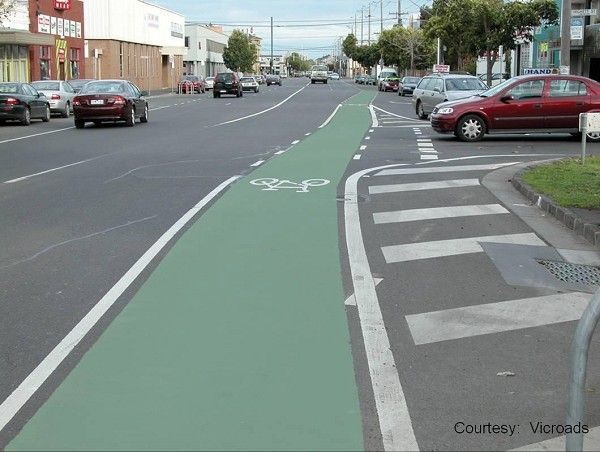 On-road bicycle lane. Image credit: Unknown
On-road bicycle lane. Image credit: Unknown On-road bicycle lane. Image credit: Unkown
On-road bicycle lane. Image credit: Unkown Bicycle crossing in Beijing, China. Image credit: iRAP
Bicycle crossing in Beijing, China. Image credit: iRAP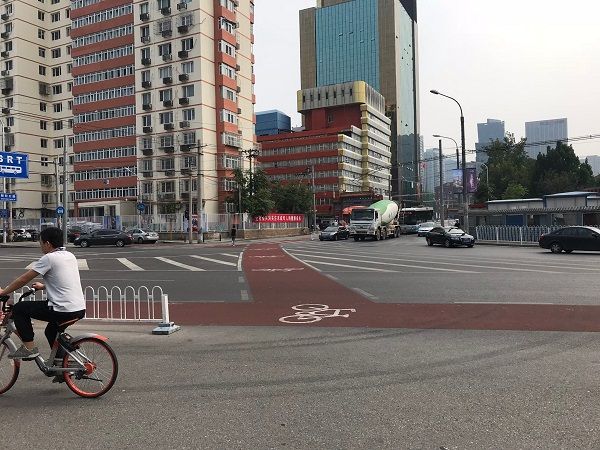 Bicycle crossing in Beijing, China. Image Credit: Greg Smith
Bicycle crossing in Beijing, China. Image Credit: Greg Smith Bicycle facility in Beijing, China. Image credit: iRAP
Bicycle facility in Beijing, China. Image credit: iRAP Bicycle facility in Beijing, China. Image credit: iRAP
Bicycle facility in Beijing, China. Image credit: iRAP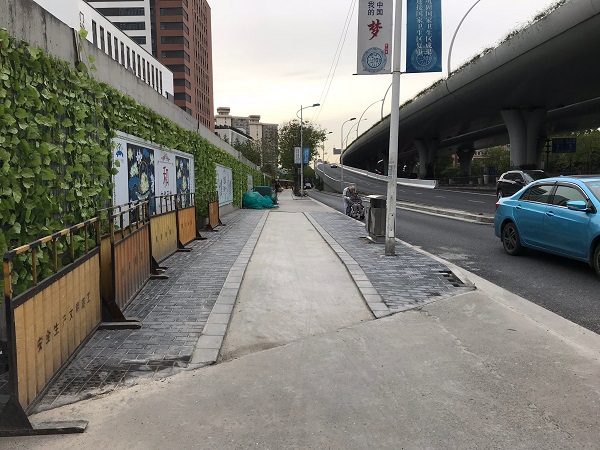 Bicycle facility in Shanghai, China. Image Credit: iRAP
Bicycle facility in Shanghai, China. Image Credit: iRAP Bicycle lane and sidewalk in China. Image credit: WRI
Bicycle lane and sidewalk in China. Image credit: WRI Bicycle lane and sidewalk in Mexico. Image credit: Agustin Centeno
Bicycle lane and sidewalk in Mexico. Image credit: Agustin Centeno Bicycle lane, Australia. Image credit: Unknown
Bicycle lane, Australia. Image credit: Unknown Off-road bicycle lane. Image credit: iRAP
Off-road bicycle lane. Image credit: iRAP Off -road bicycle lane in China. image credit: Greg Smith
Off -road bicycle lane in China. image credit: Greg Smith Bicycle lane, China. Image credit: iRAP
Bicycle lane, China. Image credit: iRAP On-road bicycle lane - Germany. Image credit: Alina Burlacu
On-road bicycle lane - Germany. Image credit: Alina Burlacu Bicycle lane with <1m separation from traffic - Italy. Image credit: Alina Burlacu
Bicycle lane with <1m separation from traffic - Italy. Image credit: Alina Burlacu Bicycle lane - USA. Image credit: Unknown
Bicycle lane - USA. Image credit: Unknown Bicycle lane - Kyoto, Japan. Image Credit: iRAP
Bicycle lane - Kyoto, Japan. Image Credit: iRAP Bicycle lane in Washington DC, USA. Image Credit: iRAP
Bicycle lane in Washington DC, USA. Image Credit: iRAP Bicycle lane, Beijing, China. Image credit: Greg Smith
Bicycle lane, Beijing, China. Image credit: Greg Smith Bicycle lanes, USA. Image credit: Unknown
Bicycle lanes, USA. Image credit: Unknown Off-road bicycle path, Australia. Image credit: Alina Burlacu
Off-road bicycle path, Australia. Image credit: Alina Burlacu Bicycle path, Japan. Image credit: Unknown
Bicycle path, Japan. Image credit: Unknown Bicycle path, Netherlands. Image credit: Alina Burlacu
Bicycle path, Netherlands. Image credit: Alina Burlacu Bicycle path, Brisbane, Australia. Image Credit: iRAP
Bicycle path, Brisbane, Australia. Image Credit: iRAP Bicyclist - Roxas Blvd Manila Philippines. Image credit: Greg Smith
Bicyclist - Roxas Blvd Manila Philippines. Image credit: Greg Smith Bicyclists in Africa. Image credit: iStock
Bicyclists in Africa. Image credit: iStock Bicyclists in Kenya. Image credit: John Mumford
Bicyclists in Kenya. Image credit: John Mumford Bollards protect a sidewalk in China. Image credit: Greg Smith
Bollards protect a sidewalk in China. Image credit: Greg Smith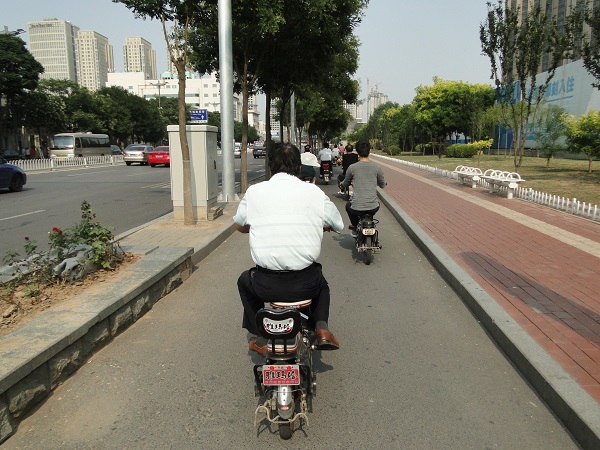 E-bikes on a bicycle lane in China. Image credit: iRAP
E-bikes on a bicycle lane in China. Image credit: iRAP Exclusive bicycle lane and pedestrian footpath in New Delhi India. Image credit: iRAP
Exclusive bicycle lane and pedestrian footpath in New Delhi India. Image credit: iRAP Exclusive bicycle lane and pedestrian footpath in New Delhi India. Image credit: iRAP
Exclusive bicycle lane and pedestrian footpath in New Delhi India. Image credit: iRAP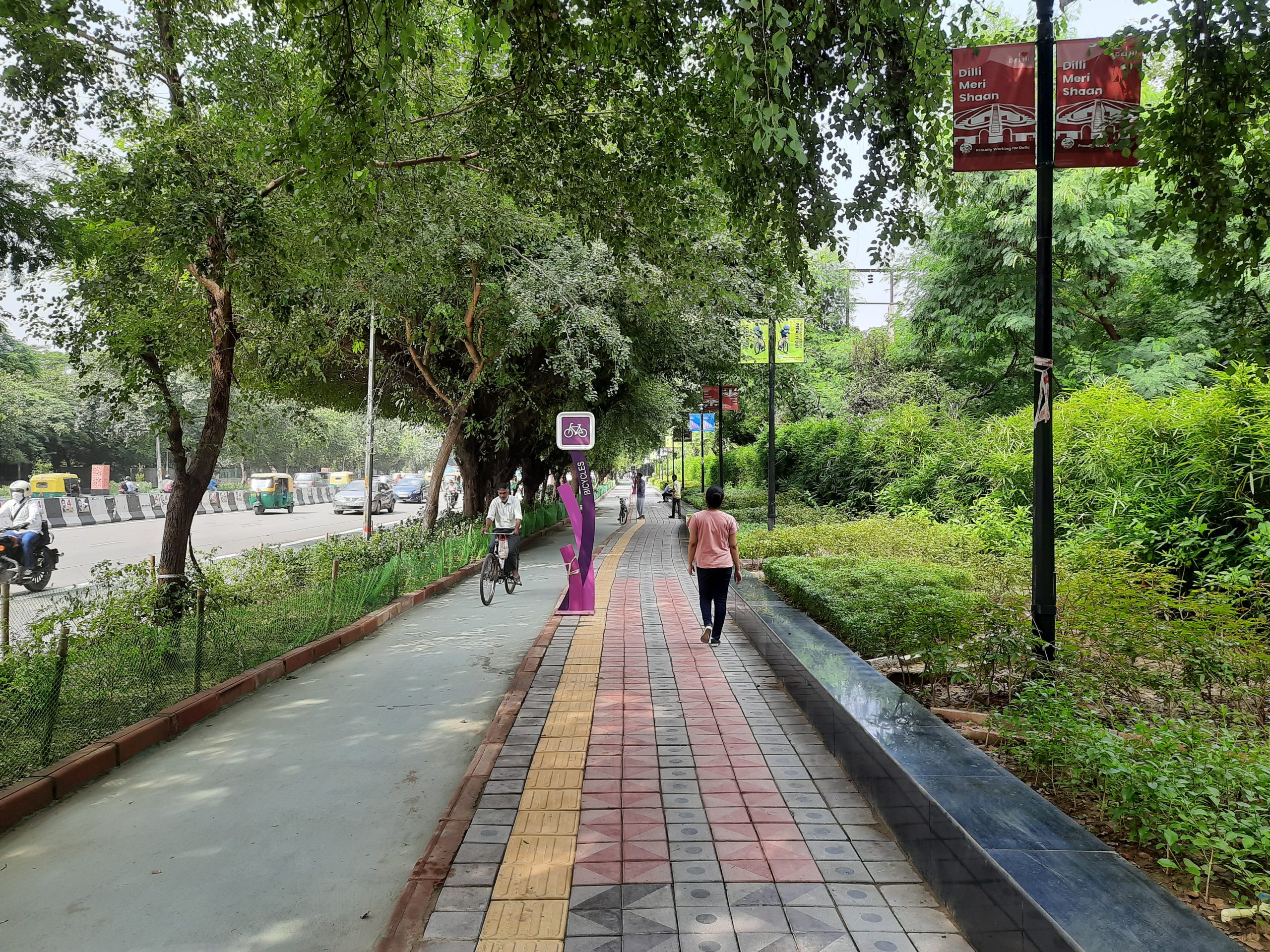 Exclusive bicycle lane and pedestrian footpath in New Delhi, India. Image credit: iRAP
Exclusive bicycle lane and pedestrian footpath in New Delhi, India. Image credit: iRAP Example of a road with a median and pedestrian refuge islands. Image credit: https://safety.fhwa.dot.gov
Example of a road with a median and pedestrian refuge islands. Image credit: https://safety.fhwa.dot.gov An on-road bicycle lane in US. Image credit: Greg Smith
An on-road bicycle lane in US. Image credit: Greg Smith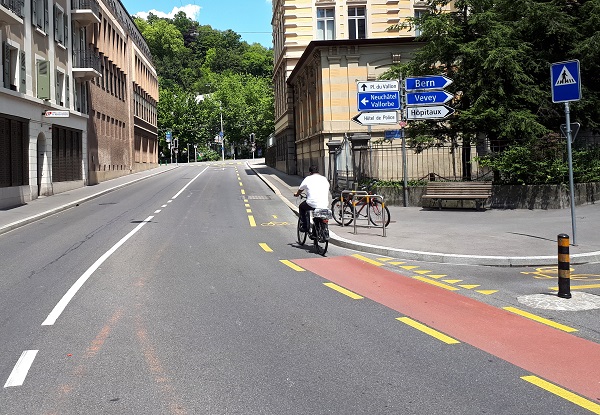 On-road dedicated bicycle lane. Image credit: Alain Rouiller
On-road dedicated bicycle lane. Image credit: Alain Rouiller Pedestrian and bicycle facilities in Shanghai. Image credit: Unknown
Pedestrian and bicycle facilities in Shanghai. Image credit: Unknown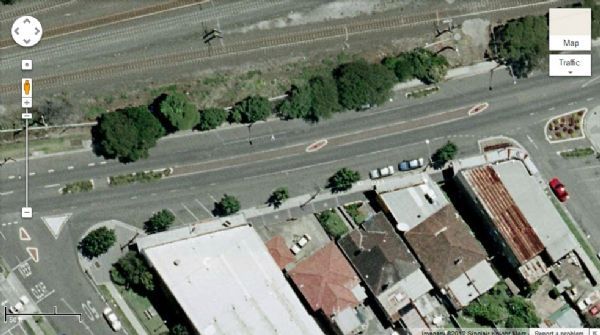 Pedestrian refuges, bicycle lanes, delineation and one-way road treatment. Image credit: Google Maps
Pedestrian refuges, bicycle lanes, delineation and one-way road treatment. Image credit: Google Maps Protected bicycle lane in China. Image credit: Greg Smith
Protected bicycle lane in China. Image credit: Greg Smith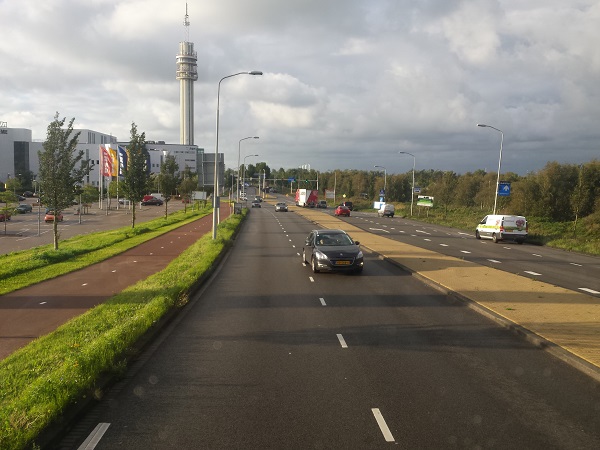 Separated bicycle path - Netherlands. Image credit: Alina Burlacu
Separated bicycle path - Netherlands. Image credit: Alina Burlacu Urban road at a multimodal transport hub with sidewalks, bicycle lanes, median and pedestrian crossing in China. Image credit: Tianjin Urban Construction Design Institute
Urban road at a multimodal transport hub with sidewalks, bicycle lanes, median and pedestrian crossing in China. Image credit: Tianjin Urban Construction Design Institute Traffic calming and pedestrian crossing. Photo credit: RdA Suisse
Traffic calming and pedestrian crossing. Photo credit: RdA Suisse Wide sealed shoulder bicycle lane, China. Image credit: Greg Smith
Wide sealed shoulder bicycle lane, China. Image credit: Greg Smith




















